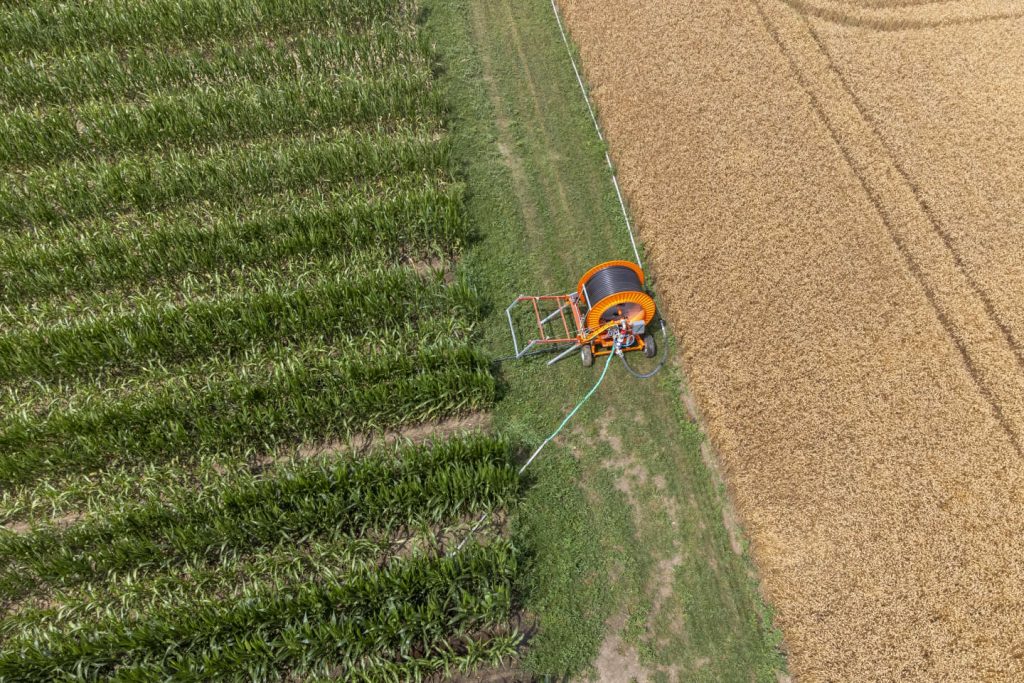A giant irrigated cornfield in the plain of Billom (Puy-de-Dôme), in July 2023, is the scene of a planned demonstration in favor of water defense. Mascots and flags are set to parade on Saturday, May 11th, between Chignat-Vertaizon and Billom in the Puy-de-Dôme department. The demonstration, organized by various groups including the Confédération paysanne 63, Bassines non merci 63, Extinction Rebellion, and others, is described as a festive and artistic day of walking and action, with a few thousand people expected to participate. The event has been declared and discussions have been held with local authorities, including the farmers involved in the construction of two large artificial reservoirs for irrigation.
The prefect of the department, Joël Mathurin, has had constructive exchanges with the organizers of the demonstration and with the farmers belonging to the free trade union association (ASL) of Turlurons, who are behind the construction of the controversial reservoirs. Additional law enforcement has been deployed to prevent any unauthorized gatherings in Clermont-Ferrand and near the installations of Limagrain, a major cooperative supporting the construction of the “gigabassines” as they are called by opponents. These reservoirs, the largest in France for agricultural irrigation, are lined with plastic sheets and are intended to be filled from November 1st to March 31st by pumping from the Allier river, with solar panels installed on top to reduce evaporation.
One of the reservoirs is planned to cover 15 hectares in Bouzel and could hold 1.05 million cubic meters of water, while the other, initially proposed for Saint-Georges-sur-Allier on 18 hectares, is intended to store 1.25 million cubic meters, equivalent to 500 Olympic swimming pools in depth. The prefect states that no formal authorization requests for the reservoirs have been submitted to date. However, the local administration and elected officials have been informed of the project since 2023. The thirty-six farmers of the ASL of Turlurons claim to have been studying the possibility of constructing these reservoirs since 2016, in consultation with local authorities and water ecosystem stakeholders, to irrigate 800 hectares of crops in fifteen communes.
Despite the lack of formal authorization requests, technical studies have already been initiated for the construction of the reservoirs. The controversy surrounding the construction of these large irrigation reservoirs highlights the ongoing debate over water resource management, agricultural practices, and environmental impact in the region. The clash between farmers seeking to improve irrigation capabilities for their crops and environmental activists protesting the potential consequences of such large-scale projects is emblematic of broader tensions between economic development and sustainability. The outcome of the planned demonstration and the decisions made by authorities regarding the construction of the reservoirs will be crucial in determining the future direction of water and agricultural policy in the region.


